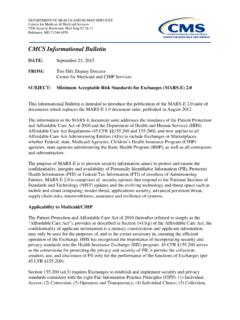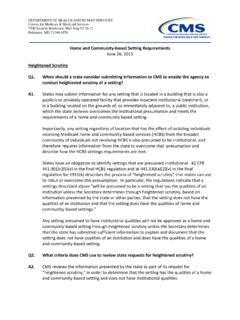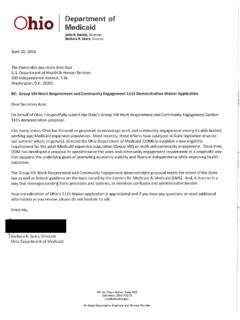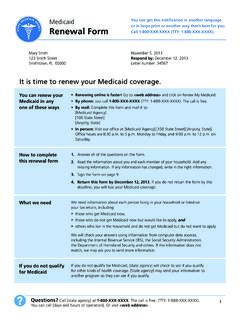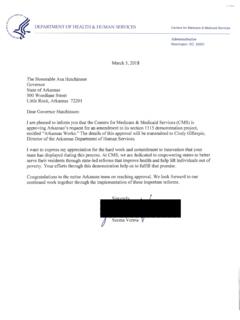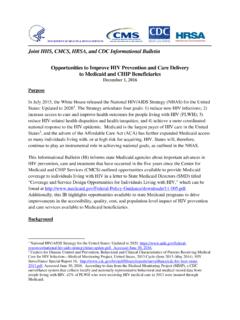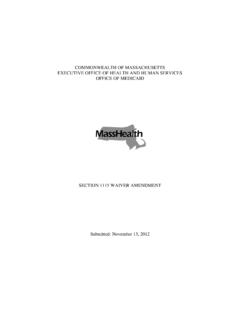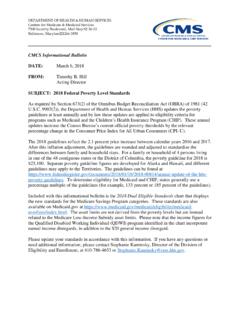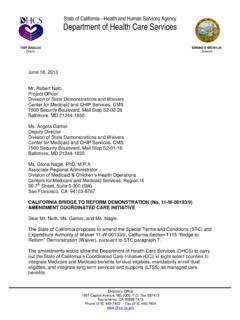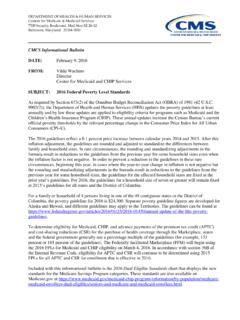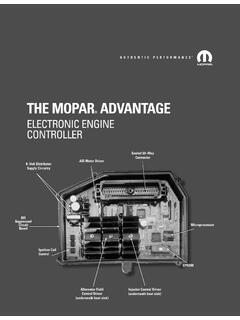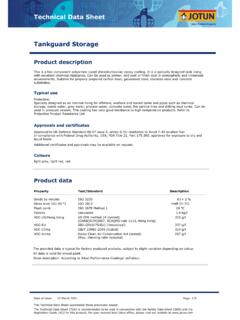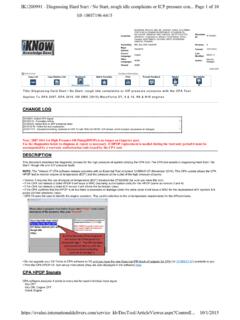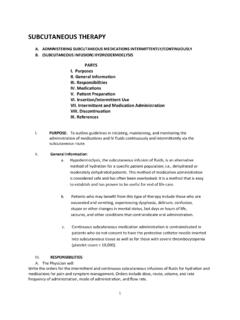Transcription of CHAPTER II ANESTHESIA SERVICES CPT CODES 00000-01999 ...
1 CHAPTER II. ANESTHESIA SERVICES . CPT CODES 00000-01999 . NATIONAL CORRECT CODING INITIATIVE POLICY MANUAL. FOR MEDICAID SERVICES . Revised January 1, 2021. Current Procedural Terminology (CPT) CODES , descriptions and other data only are copyright 2020 American Medical Association. All rights reserved. CPT is a registered trademark of the American Medical Association. Applicable FARS\DFARS Restrictions Apply to Government Use. Fee schedules, relative value units, conversion factors, prospective payment systems and/or related components are not assigned by the AMA, are not part of CPT, and the AMA is not recommending their use. The AMA does not directly or indirectly practice medicine or dispense medical SERVICES . The AMA assumes no liability for the data contained or not contained herein.
2 Revision Date (Medicaid): 1/1/2021. Table of Contents CHAPTER II .. II-4. ANESTHESIA SERVICES CPT CODES 00000 01999 .. II-4. A. Introduction ..II-4. B. Standard ANESTHESIA Coding ..II-5. C. Radiologic ANESTHESIA Coding ..II-15. D. Monitored ANESTHESIA Care ..II-16. E. General Policy Statements ..II-16. Revision Date (Medicaid): 1/1/2021. II-3. CHAPTER II. ANESTHESIA SERVICES CPT CODES 00000 01999. A. Introduction The principles of correct coding discussed in CHAPTER I apply to the Current Procedural Terminology (CPT) CODES in the range 00000-01999 . Several general guidelines are repeated in this CHAPTER . However, those general guidelines from CHAPTER I not discussed in this CHAPTER are nonetheless applicable. Physicians shall report the Healthcare Common Procedure Coding System/Current Procedural Terminology (HCPCS/CPT) code that describes the procedure performed to the greatest specificity possible.
3 A HCPCS/CPT code shall be reported only if all SERVICES described by the code are performed. A physician shall not report multiple HCPCS/CPT CODES if a single HCPCS/CPT code exists that describes the SERVICES performed. This type of unbundling is incorrect coding. The HCPCS/CPT CODES include all SERVICES usually performed as part of the procedure as a standard of medical/surgical practice. A physician shall not separately report these SERVICES simply because HCPCS/CPT CODES exist for them. Specific issues unique to this section of CPT are clarified in this CHAPTER . ANESTHESIA care is provided by an ANESTHESIA practitioner who may be a physician, a certified registered nurse anesthetist (CRNA) with or without medical direction, or an ANESTHESIA assistant (AA) with medical direction.
4 The ANESTHESIA care package consists of preoperative evaluation, standard preparation and monitoring SERVICES , administration of ANESTHESIA , and post- ANESTHESIA recovery care. Preoperative evaluation includes a sufficient history and physical examination so that the risk of adverse reactions can be minimized, alternative approaches to ANESTHESIA planned, and all questions regarding the ANESTHESIA procedure by the patient or family answered. Types of ANESTHESIA include local, regional, epidural, general, moderate conscious sedation, or monitored ANESTHESIA care. The ANESTHESIA practitioner assumes responsibility for ANESTHESIA and related care rendered in the post- ANESTHESIA recovery period until the patient is released to the surgeon or another physician.
5 Revision Date (Medicaid): 1/1/2021. II-4. Anesthesiologists may personally perform ANESTHESIA SERVICES or may supervise ANESTHESIA SERVICES performed by a CRNA or AA. CRNAs may perform ANESTHESIA SERVICES independently or under the supervision of an anesthesiologist or operating practitioner. An AA always performs ANESTHESIA SERVICES under the direction of an anesthesiologist. B. Standard ANESTHESIA Coding The following policies reflect the National Correct Coding Initiative (NCCI) program correct coding guidelines for ANESTHESIA SERVICES . 1. The CPT CODES 00100-01860 specify " ANESTHESIA for". followed by a description of a surgical intervention. The CPT. CODES 01916-01936 describe ANESTHESIA for radiological procedures.
6 Several CPT CODES (01951-01999, excluding 01996). describe ANESTHESIA SERVICES for burn excision/debridement, obstetrical, and other procedures. The CPT CODES 99151-99157. describe moderate (conscious) sedation SERVICES . ANESTHESIA SERVICES include, but are not limited to, preoperative evaluation of the patient, administration of anesthetic, other medications, blood, and fluids, monitoring of physiological parameters, and other supportive SERVICES . ANESTHESIA CODES describe a general anatomic area or service which usually relates to a number of surgical procedures, often from multiple sections of the CPT Manual. Only one ANESTHESIA code is reported unless the ANESTHESIA code is an Add-on Code (AOC). In this case, both the code for the primary ANESTHESIA service and the ANESTHESIA AOC code are reported according to "CPT Manual" instructions.
7 2. A unique characteristic of ANESTHESIA coding is the reporting of time units. Payment for ANESTHESIA SERVICES increases with time. In addition to reporting a base unit value for an ANESTHESIA service, the ANESTHESIA practitioner reports ANESTHESIA time. ANESTHESIA time is defined as the period during which an ANESTHESIA practitioner is present with the patient. It starts when the ANESTHESIA practitioner begins to prepare the patient for ANESTHESIA SERVICES in the operating room or an equivalent area and ends when the ANESTHESIA practitioner is no longer furnishing ANESTHESIA SERVICES to the patient ( , when the patient may be placed safely under postoperative care). ANESTHESIA time is a continuous time Revision Date (Medicaid): 1/1/2021.
8 II-5. period from the start of ANESTHESIA to the end of an ANESTHESIA service. In counting ANESTHESIA time, the ANESTHESIA practitioner can add blocks of time around an interruption in ANESTHESIA time as long as the ANESTHESIA practitioner is furnishing continuous ANESTHESIA care within the time periods around the interruption. Example: A patient who undergoes a cataract extraction may require monitored ANESTHESIA care (see below). This may require administration of a sedative in conjunction with a peri/retrobulbar injection for regional block ANESTHESIA . Subsequently, an interval of 30 minutes or more may transpire during which time the patient does not require monitoring by an ANESTHESIA practitioner. After this period, monitoring will commence again for the cataract extraction and ultimately the patient will be released to the surgeon's care or to recovery.
9 The time that may be reported would include the time for the monitoring during the block and during the procedure. The interval time and the recovery time are not included in the ANESTHESIA time calculation. Also, if unusual SERVICES not bundled into the ANESTHESIA service are required, the time spent delivering these SERVICES before ANESTHESIA time begins or after it ends may not be included as reportable ANESTHESIA time. However, if it is medically necessary for the ANESTHESIA practitioner to continuously monitor the patient during the interval time and not perform any other service, the interval time may be included in the ANESTHESIA time. 3. It is standard medical practice for an ANESTHESIA practitioner to perform a patient examination and evaluation prior to surgery.
10 This is considered part of the ANESTHESIA service and is included in the base unit value of the ANESTHESIA code. The evaluation and examination are not reported in the ANESTHESIA time. If surgery is canceled, subsequent to the preoperative evaluation, payment may be allowed to the anesthesiologist for an Evaluation & Management (E&M) service and the appropriate E&M code may be reported. (A non-medically directed CRNA may also report an E&M code under these circumstances if permitted by state law.). Similarly, routine postoperative evaluation is included in the base unit for the ANESTHESIA service. If this evaluation occurs after the ANESTHESIA practitioner has safely placed the patient under postoperative care, neither additional ANESTHESIA time units nor E&M CODES shall be reported for this evaluation.
